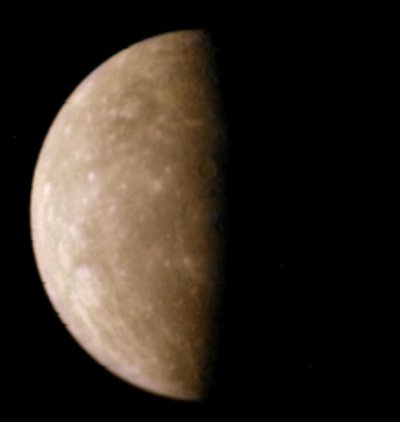Dancing With the Planets to the Music of the Spheres
 As September comes to a close, the brilliant planet Venus stands as the lone planet visible in the eastern morning sky. But that is going to change in the coming days.
As September comes to a close, the brilliant planet Venus stands as the lone planet visible in the eastern morning sky. But that is going to change in the coming days.As we transition into October, Venus will soon be joined by two other planets, Mercury and Saturn. During the first half of October, the three planets will engage each other in some interesting conjunctions and will appear to change position relative to each other on a morning-to-morning basis.
If you have a clear and unobstructed eastern horizon, you'll be able to follow this interesting dawn dance of the planets.
Binoculars will help because the combination of their low altitudes and bright morning twilight might make the view a bit challenging at times. First, we present a viewing synopsis for each planet, followed by a chronology of the changing array among the three. And as a bonus, the moon will join them on Oct. 16.
Mercury
 During the opening week of October should become easily visible just above the horizon due east during mid-morning twilight, about 45 to 50 minutes before sunrise. For viewers near 40-degrees north latitude Mercury is highest on Oct. 5, its date of greatest elongation (18-degrees west of the sun). While its other five elongations of 2009 are larger in angle, at this time of year the ecliptic is nearly vertical in the predawn sky for mid-northern observers.
During the opening week of October should become easily visible just above the horizon due east during mid-morning twilight, about 45 to 50 minutes before sunrise. For viewers near 40-degrees north latitude Mercury is highest on Oct. 5, its date of greatest elongation (18-degrees west of the sun). While its other five elongations of 2009 are larger in angle, at this time of year the ecliptic is nearly vertical in the predawn sky for mid-northern observers.As a result, Mercury stands almost directly above the sun and rises right around the time of the break of dawn. This speedy little planet sinks back toward the sunrise horizon quite slowly for the rest of October, brightening slightly all the while. By the third week of October, Mercury becomes difficult to see; superior conjunction occurs on Nov. 5. A fun challenge will be to follow it as late into October as possible.
Venus rises lustrous in the east just before the first gleam of morning twilight throughout October. Every week Venus sinks a little lower; in the final days of October binocular viewers may spy the blue star Spica emerging from the dawn glow well below Venus.
 Saturn is only now emerging into the morning sky in western Virgo and will start to become visible during the first week of October very low in the east in the brightening dawn. The rings were turned edgewise to Earth on Sep. 4 and now the northern ring face is beginning to come into view to our line of sight. In a telescope magnifying at least 30-power, they'll appear as a thin, bright line. The angle that Saturn's rings are tipped toward Earth increase slightly during October from 1.5 to 3-degrees.
Saturn is only now emerging into the morning sky in western Virgo and will start to become visible during the first week of October very low in the east in the brightening dawn. The rings were turned edgewise to Earth on Sep. 4 and now the northern ring face is beginning to come into view to our line of sight. In a telescope magnifying at least 30-power, they'll appear as a thin, bright line. The angle that Saturn's rings are tipped toward Earth increase slightly during October from 1.5 to 3-degrees.Chronology
Oct. 5 – Take note of dimmer Saturn about 3-degrees below and slightly to Mercury's left this morning.[See Map]
Oct. 8 – Early this morning, a very striking conjunction takes place between Mercury and Saturn. The two planets will be separated by only three-tenths of a degree. Mercury will appear almost 5 times brighter than Saturn, appearing below and to its right. And hovering above and to their right will be brilliant Venus.
Oct. 13 – Now it's Venus' turn to have a close conjunction with Saturn. They're separated by only a half-degree; Venus will sit below and to Saturn's right and will appear nearly 100 times brighter than its ringed companion.
Oct. 16 – Facing slightly slightly south of due east this morning about an hour before sunrise, you'll see a slender crescent moon, less than 2 days before New, forming a broad isosceles triangle with Saturn and Venus (the moon at the vertex).
Venus Image Gallery
Saturn Image Gallery
Mercury Image Gallery
Joe Rao serves as an instructor and guest lecturer at New York's Hayden Planetarium. He writes about astronomy for The New York Times and other publications, and he is also an on-camera meteorologist for News 12 Westchester, New York









0 Comments:
Post a Comment
Subscribe to Post Comments [Atom]
<< Home